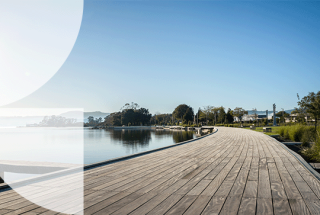No need to get bogged down in natural wetland definition… yet

No need to get bogged down in natural wetland definition… yet
Wednesday 13 July, 2022
Te Ara o Te Ata is the proposed new six-kilometre stretch of State Highway 3 north of New Plymouth (‘the project’). The resource consents and notice of requirement to alter the designation for the current route of State Highway 3 have been subject to numerous appeals since 2018. The Environment Court recently issued its final decision and approved the resource consents for the major infrastructure project as well as confirmed the Notice of Requirement to alter the designated route. However, the project has not been able to commence because that final decision was appealed to the High Court by Mr and Mrs Pascoe (the Pascoes) and the Poutama Kaitiaki Charitable Trust (the Trust). The Pascoes’ farm has been acquired in part for the new route and the Trust also claim an interest in the land over which the project runs.
The High Court held that most of the allegations made by the appellants were an effort to relitigate factual findings and other matters which had been finally determined by the Environment Court. There were only two grounds of the appeal which it considered had “the potential to constitute challengeable questions of law”. The first was whether the Environment Court was wrong in its application of the National Policy Statement for Freshwater Management 2020 (the Policy Statement) and that it was required to determine whether an area of the project was a “natural inland wetland”. The second ground was whether the Environment Court was wrong when it did not impose a lapse date on the amended designation.
The first ground – was the Environment Court required to make a conclusive determination on whether the project area was a “natural inland wetland”?
The Policy Statement defines a “natural wetland” and a “natural inland wetland” as follows:
natural wetland means a wetland (as defined in the Act) that is not:
- a wetland constructed by artificial means (unless it was constructed to offset impacts on, or restore, an existing or former natural wetland); or
- a geothermal wetland; or
- any area of improved pasture that, at the commencement date, is dominated by (that is more than 50% of) exotic pasture species and is subject to temporary rain derived water pooling
natural inland wetland means a natural wetland that is not in the coastal marine area
The Environment Court was unable to reach a firm conclusion on the project area’s status as a “natural inland wetland” but ultimately formed a view that part of the project area could constitute a natural inland wetland. After that, it considered cl 3.22 of the Policy Statement, which requires every regional plan to include a policy that avoids the loss of natural inland wetlands unless an exception applies. One of those exceptions concerns the functional need and necessity for specified infrastructure, including its benefits, where its effects can be managed by applying the effects management hierarchy. The Environment Court concluded that the specified infrastructure exception could be relied upon for the project.
The High Court found that there was no error of law in the Environment Court’s approach, as it was immaterial whether the project area constituted a natural inland wetland because clearly the specified infrastructure exception applied. The Environment Court also correctly applied the Policy Statement’s definition of “functional need” for the specified infrastructure and found that the project could only occur in the chosen environment. Its assessment was “a context and fact specific inquiry,” so there was no error of law.
The second ground – was the Environment Court required to impose a lapse period on the Notice of Requirement to alter a designation?
The Pascoes’ and Trust’s remaining ground concerned whether the Environment Court erred in failing to impose a lapse period on the Notice of Requirement to alter the designation for State Highway 3.
The standard five-year lapse period on designations (which are yet to be implemented) is prescribed under s 184 of the RMA. However, a Notice of Requirement to alter a designation is set out in s 181(2), and it prescribes which other provisions apply to the alteration process. Interestingly and logically, the lapse period prescribed by s 184 is not included under s 181(2), therefore the s 181 alteration “appears to contemplate that an original designation has been implemented already.” As the lapse provision requirement is explicitly excluded by s 181(2), the Environment Court did not err in failing to impose a lapse date on the Notice of Requirement to alter the designation.
Conclusion
As the appellants’ grounds failed, the appeal was dismissed. Te Ara o Te Ata can proceed and construction on the specified infrastructure is expected to commence after winter this year.
This decision is important for two reasons: it confirms the correct approach of the Environment Court when considering if specified infrastructure can be approved and confirmed in a likely qualifying natural wetland, in absence of any clearer meaning on the definition; further, this decision also holds that there is no legal basis to impose a lapse period on a Notice of Requirement to alter an implemented designation.
Definition issues – where to next?
The High Court found that the Environment Court had struggled with the definition of natural inland wetland, concluding that the definition was imprecise and raised more questions than it answers, particularly in relation to the meaning of ‘improved pasture’. Last year, the Ministry for the Environment sought feedback on whether to amend the definition of a “natural wetland” and a “natural inland wetland” in the Policy Statement (NPS-FM) and National Environmental Standards for Freshwater 2020 (NES-F). On 31 May this year, the Ministry released an exposure draft of proposed changes to the NPS-FM and NES-F, including the natural wetland definition. The new proposed definition of natural wetland is:
natural wetland means a wetland (as defined in the Act) that is not:
- a deliberately constructed wetland, other than a wetland constructed to offset impacts on, or to restore, an existing or former natural wetland as part of giving effect to the effects management hierarchy; or
- a wetland that has developed in or around a deliberately constructed water body, since the construction of the water body; or
- a geothermal wetland; or
- a wetland that:
- is within an area of pasture; and
- has ground cover comprising more than 50% exotic pasture species (as identified in the National List of Exotic Pasture Species (see clause 1.8)); and
- is not known to contain threatened species.
A number of other changes are proposed, including providing consenting pathways for quarrying, landfills, mining, and urban development activities in areas including natural wetlands. These changes recognise that the original prohibited status of earthworks in natural wetlands had a sterilising effect on a number of activities that are essential to achieving the objectives of other national level direction, including the NPS Urban Development.
Please get in touch with one of our experts below if you have any questions on how the proposed wording may impact on you.







